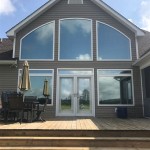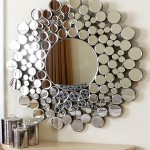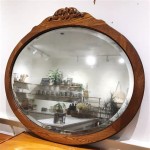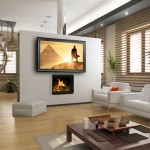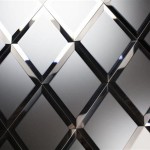Best Hardware for Hanging a Heavy Mirror
Hanging a heavy mirror safely and securely requires careful consideration of the appropriate hardware. Choosing the wrong hardware can result in damage to the wall, the mirror, or both. This article will explore the best hardware options for hanging heavy mirrors, providing information on weight limits, installation methods, and ideal wall types.
Before selecting any hardware, it is crucial to determine the exact weight of the mirror. Use a bathroom scale for smaller mirrors and consider seeking assistance for larger, heavier pieces. Knowing the precise weight will guide the selection of hardware with an appropriate weight capacity.
D-Rings and Wire:
D-rings, attached to the back of the mirror, combined with heavy-duty picture wire offer a traditional hanging method. This method distributes the weight evenly across the wire and is suitable for medium-weight mirrors. However, it's crucial to select wire rated for the mirror’s weight. Always choose wire with a significantly higher weight capacity than the mirror's actual weight as a safety precaution. This system works best on studs or with appropriately rated wall anchors.J-Hooks:
J-hooks are a simple and effective way to hang heavier mirrors. These hooks are screwed directly into wall studs and offer a robust hanging solution. J-hooks provide a more secure hold than D-rings and wire for heavier mirrors but require accurate stud location. Ensure the hooks are appropriately sized for the thickness of the mirror frame.French Cleats:
French cleats offer exceptional strength and stability for very heavy mirrors. A French cleat consists of two interlocking pieces of wood, metal, or plastic. One piece is attached to the wall, and the other is attached to the back of the mirror. The angled design allows the two pieces to interlock, creating a strong and flush mount. French cleats are ideal for oversized or exceptionally heavy mirrors and offer a higher degree of security than other methods.Mirror Mounting Clips:
Mirror mounting clips offer a discreet and secure option, particularly suitable for frameless mirrors. These clips typically consist of two parts: one attaches to the wall, and the other to the back of the mirror. These clips grip the edges of the mirror, holding it firmly in place. Be sure to choose clips specifically designed for the thickness and weight of the mirror.Heavy-Duty Wall Anchors:
Regardless of the chosen hanging method, using appropriate wall anchors is essential for any mirror not hung directly on a stud. Several types of anchors are available, each with specific weight ratings and ideal wall types. Plastic expansion anchors are suitable for lighter mirrors in drywall. Molly bolts offer greater holding power in hollow walls. Toggle bolts are the strongest option for hollow walls and are capable of supporting very heavy loads. For solid walls, heavy-duty screws are recommended, but pre-drilling pilot holes is essential.Choosing the Right Hardware for Different Wall Types:
Drywall:
For lighter mirrors on drywall, plastic expansion anchors or molly bolts combined with D-rings and wire or J-hooks may be sufficient. Heavier mirrors require toggle bolts or, ideally, locating and utilizing wall studs.Plaster:
Plaster walls are generally more robust than drywall. While plastic anchors might be sufficient for lighter mirrors, toggle bolts or locating studs are recommended for heavier pieces. The age and condition of plaster should also be considered, as older plaster may be brittle.Concrete or Brick:
Concrete and brick walls require specialized hardware. Heavy-duty concrete screws or masonry anchors are necessary for hanging any mirror, regardless of weight. Pre-drilling pilot holes using a masonry bit is crucial.Installation Best Practices:
Accurate measurements are critical for proper installation. Carefully mark the desired location of the mirror and ensure the hardware is evenly spaced. Double-check all measurements before drilling any holes. Using a level ensures the mirror hangs straight.
When using wall anchors, follow the manufacturer's instructions carefully. Over-tightening can damage the wall, while under-tightening compromises the anchor's holding power. Always choose anchors with a weight rating significantly higher than the mirror's weight.
For extremely heavy mirrors, seeking professional installation is recommended. Professional installers have the experience and tools to ensure the mirror is hung safely and securely, minimizing the risk of damage to the mirror or the wall.
Selecting the appropriate hardware for hanging a heavy mirror involves careful consideration of the mirror's weight, the wall type, and the desired hanging method. By accurately assessing these factors and following best practices, one can ensure the mirror is hung safely and securely for years to come.

How To Hang A Heavy Mirror C R F T

How To Hang A Heavy Mirror

Heavy Picture Mirror Hanging Kit 50 Kg

How To Hang A Heavy Mirror

How To Hang A Heavy Mirror With Pictures Wikihow

How To Hang A Heavy Mirror

How To Hang A Large Or Heavy Mirror

How To Hang A Heavy Mirror The Home Depot

Heavy Picture Mirror Hanging Kit 50 Kg
How To Hang A 100 Pound Mirror On Drywall Quora

